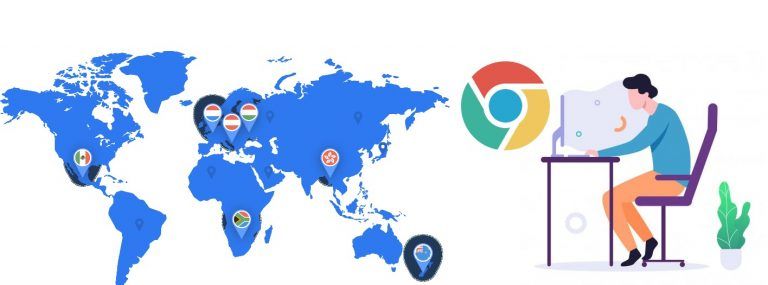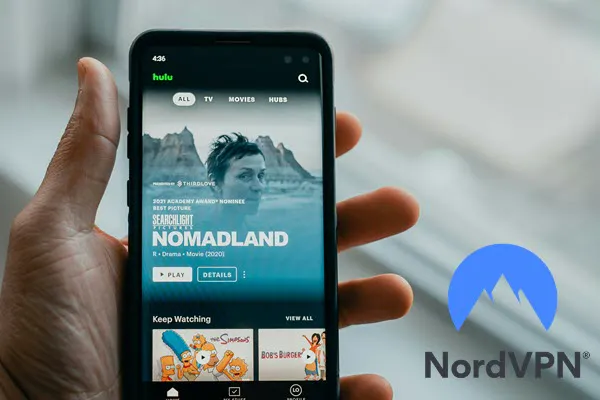The best Android phone to buy in 2021
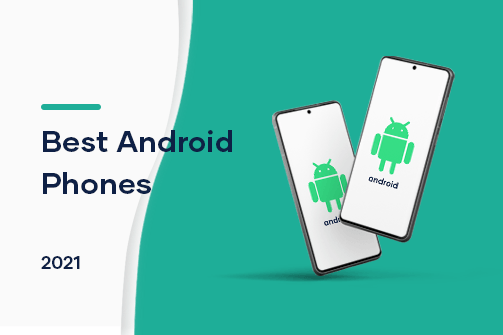
With so many Android phones on offer, choosing the best one for you can be tough! So we decided to put together a handy guide.
We analysed 140 different Android phones that are still available to buy new in 2021, and identified the best of the bunch.
And it’s a guide with a difference. It’s not about which phones have the best specs, because the best specs rarely translate into the best phone. Instead, it’s based on judgement and experience. We’re big Android fans ourselves, and have used and lived with countless Android phones over the years.
Plus, for each category, we recommend 3 phones: a budget phone, a mid-range phone and a flagship phone. So you’ll find it helpful, regardless of your budget.
IMPORTANT: Please check compatibility with your carrier before buying any phone.
Now let’s get into it…
What’s most important to you?
 Best Android phone for photos
Best Android phone for photos
Whether it’s for family photos or Instagram snaps, you want a phone that can hold its own in the camera department. The reality is that most Android phones these days have pretty good cameras, but there are definitely some standouts.
NOTE: We’re not necessarily talking about the best camera for professional photographers here. More for point-and-click people who want the phone to do most of the heavy lifting.
Select your budget to see our recommendation:
Best budget Android phone for photos ($100 – $400)
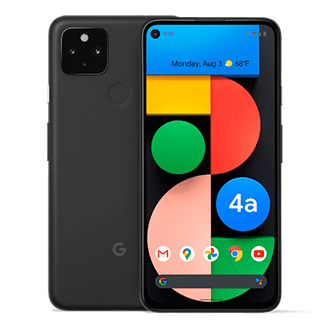
 Budget Winner
Budget Winner
Hands-down, the best budget Android phone for photos is the Google Pixel 4a. It has almost exactly the same camera hardware as Google’s 2019 flagship phone, the Pixel 4, and it’s miles ahead of the competition.
![]() Pros
Pros
- Easy point & click photography
- Google’s amazing processing software
- Stunning portrait shots (blurred / bokeh background), with accurate edge detection, on both main and selfie cameras
- Sharp detail, even in darker areas of photos (e.g. a dark shadow on a sunny day)
- Natural color reproduction
- No skin softening / beautifying
- Great night mode (‘Night sight’) so no need to use the flash
- Amazing astrophotography (but you need a tripod)
- Supports Google’s CameraX library, so Snapchat takes photos with the device’s actual camera, rather than just taking a screenshot of the viewfinder as it does with all non-Pixel budget phones
![]() Cons
Cons
- No wide-angle camera
- No telephoto lens – digital zoom only, which means zoomed photos are a bit grainy (but not more than the competition)
- No macro mode for extreme close-ups
And of course when you buy a Pixel, you don’t just get great photos, you get Google’s intelligent user experience. It’s simple and easy to use (stock Android), and everything just works. And there are lots of little touches that are hard to explain, but which make it stand out from the crowd. Plus you get Google’s monthly security updates as soon as they’re released.
Best mid-range Android phone for photos ($400- $700)
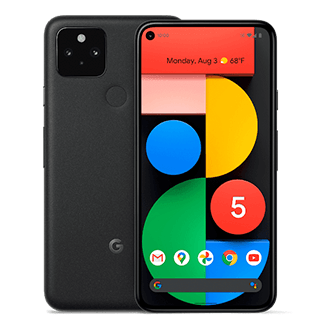
 Mid-range Winner
Mid-range Winner
The battle for mid-range photo supremacy is clearly won by the Google Pixel 5. It’s currently Google’s best phone, and in every way except its processor and price, it’s actually a legitimate flagship.
![]() Pros
Pros
- Easy point & click photography
- Google’s amazing processing softwareStunning portrait shots (blurred / bokeh background), with accurate edge detection, on both main and selfie cameras
- Ultra-wide angle lens so you can get more into your photos
- Sharp detail, even in darker areas of photos (e.g. a dark shadow on a sunny day)
- Natural color reproduction
- Minimal lens flaring (halo effect) when taking photos with the sun or a bright light in them
- No skin softening / beautifying
- Great night mode (‘Night sight’) so no need to use the flash
- Amazing astrophotography (but you need a tripod)
- Supports Google’s CameraX library, so Snapchat takes photos with the device’s actual camera, rather than just taking a screenshot of the viewfinder as it does with all non-Pixel mid-range phones
![]() Cons
Cons
- No telephoto lens – digital zoom only, which means zoomed photos can be a bit grainy (a lot grainier than the Samsung Galaxy S20 FE)
- No macro mode for extreme close-ups
Best flagship Android phone for photos ($700+)
For flagship photo quality, the verdict isn’t simple. It depends where you’re located.
If you’re in the US
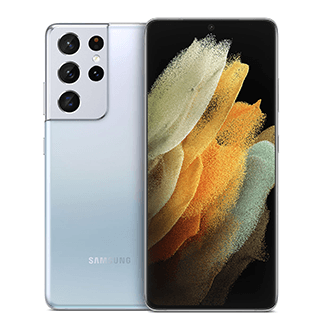
 Flagship Winner
Flagship Winner
If you’re in the US and you don’t fancy importing a Chinese phone, then the Samsung Galaxy S21 Ultra is the clear winner. (And I don’t say that lightly; I hate Samsung phones, and I’d never buy one.)
Its camera leaves every other flagship in its dust for photos, and I think you’ll find it difficult to fault.
![]() Pros
Pros
- Incredible zoom (10x optical, which means no grainy zoom photos)
- Great low-light performance, both with and without night mode
- Excellent extreme closeups
- Pretty natural colors
- Good detail in dark and shadowed areas of photos
- Good handling of harsh light in photos (e.g. the sun, a bright light, sunlight on someone’s face)
- Stunning portrait mode with good edge detection
- Great skin detail with little to no ‘beautifying’
- Very clear and detailed selfie photos
- Supports Google’s CameraX library, so Snapchat takes photos with the device’s actual camera, rather than just taking a screenshot of the viewfinder as it does with all other flagships outside of the S21 line
![]() Cons
Cons
- Expensive
- Hard to focus on extreme closeup / macro shots (has a ‘Focus Enhancer’ feature, but it removes the bokeh, blurred background effect)
- Colors aren’t as natural as the Pixel 5, but better than I expected from a Samsung
If you’re not in the US
If you’re elsewhere in the world, our recommendations are:

Samsung Galaxy S21 Ultra
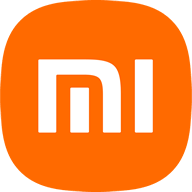
Xiaomi Mi 10 Pro
Xiaomi Mi 10 Ultra
Xiaomi Mi 11 Ultra

Vivo X50 Pro+
Vivo X60 Pro+

Oppo Find X2 Pro
Oppo Find X3 Pro
All the Chinese phones in the list above are about as good as the Galaxy S21 Ultra for photos – better in some ways, worse in some. (Although I think you’d want to look carefully at the selfie capabilities, because my feeling is the S21 Ultra is better than all on that front, with the possible exception of the Xiaomi Mi 10 Ultra & 11 Ultra.)
Note that Huawei have some great cameras too, but I can’t recommend their phones because you don’t get the Google Play Store.
If you don’t want to spend quite that much money
I know this is the flagship section, but I’m sure you flagship hunters are as keen for a bargain as anyone else. So I thought I’d mention the Google Pixel 5. It’s currently Google’s best phone, and in every way except its processor and price, it’s actually a legitimate flagship.
It doesn’t compare on the zoom front, but for point-and-shoot photos, it can still compete with the best of them. And for half the price!
 Best Android phone video camera
Best Android phone video camera
If video is your thing, you need a phone that can really come through for you. Fast, stable, vibrant, sharp, good contrast, good audio… The reality is that most Android phones these days have pretty good video cameras, but there are definitely some standouts.
NOTE: We’re not necessarily talking about the best camera for professional videographers here. More for point-and-click people who want the phone to do most of the heavy lifting.
Select your budget to see our recommendation:
Best budget Android phone video camera ($100 – $400)

 Budget Winner
Budget Winner
As with still photography, the hands-down winner for video in the budget category is the Google Pixel 4a. It has almost exactly the same camera hardware as Google’s 2019 flagship phone, the Pixel 4, which puts it miles ahead of the competition.
![]() Pros
Pros
- Google’s amazing processing software
- Fast auto-focus
- Sharp detail, even in darker areas of photos (e.g. a dark shadow on a sunny day)
- Natural color reproduction
- Excellent stabilization (so you can walk or run and the video won’t be jumpy or jittery)
- Bright low-light video
- Good microphone sensitivity
- Can shoot 4K video
- Supports Google’s CameraX library, so Snapchat shoots video with the device’s actual camera, rather than just taking a screen recording of the viewfinder as it does with all non-Pixel budget phones
![]() Cons
Cons
- No wide-angle camera
- No telephoto lens – digital zoom only, which means zoomed videos are a bit grainy (but not more than the competition)
- Microphone sensitivity does mean it picks up a bit of wind noise
- Low light video can be a bit grainy / visually ‘noisy’ in darker areas because it uses software to brighten
And of course when you buy a Pixel, you don’t just get great videos, you get Google’s intelligent user experience. It’s simple and easy to use (stock Android), and everything just works. And there are lots of little touches that are hard to explain, but which make it stand out from the crowd. Plus you get Google’s monthly security updates as soon as they’re released.
Best mid-range Android phone video camera ($400- $700)

 Mid-range Winner
Mid-range Winner
For mid-range video, things are a lot closer. I was torn between two devices: the Google Pixel 5 and the Samsung Galaxy S20 FE. In some situations (e.g. ultrawide video), the Samsung had the edge, but overall, I still prefer the video from the Pixel. Add that to the fact that it shoots way better photos, and you have a pretty compelling argument.
![]() Pros
Pros
- Google’s amazing processing software
- Fast auto-focus
- Sharp detail, even in darker areas of photos (e.g. a dark shadow on a sunny day)
- Natural color reproduction
- Excellent stabilization (so you can walk or run and the video won’t be jumpy or jittery), although the ultrawide stabilization is better on the Samsung Galaxy S20 FE
- Bright low-light video
- Good microphone sensitivity (with less wind noise than the budget Pixel 4a and also less than the Samsung Galaxy S20 FE)
- Can shoot 4K video (at 60 frames per second) but not on ultrawide
- Better ultrawide video than the Samsung Galaxy S20 FE
- Supports Google’s CameraX library, so Snapchat shoots video with the device’s actual camera, rather than just taking a screen recording of the viewfinder as it does with all non-Pixel mid-range phones
![]() Cons
Cons
- No telephoto lens – digital zoom only, which means zoomed video is a bit grainy (a lot grainier than the Galaxy S20 FE)
- Limited to 1080p video on the selfie camera
Best flagship Android phone video camera ($700+)
As with flagship photo quality, the verdict on flagship video quality isn’t simple. It depends where you’re located.
If you’re in the US

 Flagship Winner
Flagship Winner
If you’re in the US and you don’t fancy importing a Chinese phone then, again, the Samsung Galaxy S21 Ultra is the clear winner. (And, again, I don’t say that lightly; I hate Samsung phones, and I’d never buy one.)
The Samsung Galaxy S21 Ultra video performance blew me away. When compared to the other flagships that are readily available in the US, it was miles ahead.
![]() Pros
Pros
Beautiful 8k video
4k selfie video with a natural bokeh (blurred background) effect
Vibrant colours that are still pretty natural
Good detail in shadows and dark video
Great video zoom (10x optical, which means no grainy zoomed vids)
Great night-time and low-light video
Incredible slow-motion
Supports Google’s CameraX library, so Snapchat shoots video with the device’s actual camera, rather than just taking a screen recording of the viewfinder as it does with all flagship phones outside the S21 range
![]() Cons
Cons
- Expensive
If you’re not in the US
If you’re elsewhere in the world, uur recommendations are:

Samsung Galaxy S21 Ultra

Xiaomi Mi 10 Pro
Xiaomi Mi 10 Ultra
Xiaomi Mi 11 Ultra

Vivo X50 Pro+
Vivo X60 Pro+

Oppo Find X2 Pro
Oppo Find X3 Pro
All the Chinese phones in the list above are about as good as the Galaxy S21 Ultra for video – better in some ways, worse in some. (Although I think you’d want to look carefully at the selfie video capabilities, because my feeling is the S21 Ultra is better than all on that front.)
If you don’t want to spend quite that much money
Again, I know this is the flagship section, but everyone likes to save a few dollars! So the Google Pixel 5 deserves a mention. It’s currently Google’s best phone, and in every way except its processor and price, it’s actually a legitimate flagship.
It doesn’t compare on the zoom front, but for point-and-shoot video, it can still compete with the best of them. And for half the price!
 Best Android phone display
Best Android phone display
It’s the thing you look at, and interact with, for hours every day. So you definitely want it to be bright, colorful, detailed, responsive and smooth.
Select your budget to see our recommendation:
Best budget Android phone display ($100 – $400)
If you’re in the US

 Budget Winner
Budget Winner
If you’re in the US and you don’t want to import a phone, the best budget Android phone display for you is the Google Pixel 4a.
![]() Pros
Pros
- Very high resolution (443 pixels per square inch), which means very sharp detail
- 803 nits maximum brightness
- Corning Gorilla Glass 3
- HDR10 (means better detail in light scenes and better visibility in dark scenes)
![]() Cons
Cons
- Only 60Hz refresh rate (so scrolling won’t look as smooth as some phones in the budget range)
If you’re not in the US
If you’re not in the US, there are a few budget Android phones with a great display to choose from:

Oppo Reno4 Pro

Xiaomi Redmi Note 10 Pro
Xiaomi Redmi Note 10 Pro Max
All of the above have a better refresh rate and glass screen than the Pixel, and the Oppo is brighter. Their resolution (pixels per inch) is slightly lower, but I doubt you’ll notice.
Best mid-range Android phone display ($400- $700)
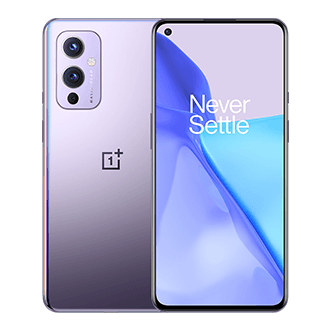
 Mid-range Winner
Mid-range Winner
The OnePlus 9 has the best display of any mid-range Android phone, hands-down.
![]() Pros
Pros
- High resolution (402 pixels per square inch), which means very sharp detail
- Very bright (871 nits maximum brightness)
- Corning Gorilla Glass 5
- HDR10+ (means better detail in light scenes and better visibility in dark scenes)
- Has exceptional color accuracy (average of 1.7 deltaE and 0.3 JNCD), which means its colors are basically indistinguishable from colors in the real world
![]() Cons
Cons
- None
Best flagship Android phone display ($700+)
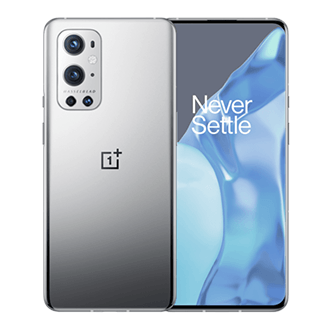
 Flagship Winner
Flagship Winner
The OnePlus 9 Pro definitely has the best display of all the flagship Android phones.
![]() Pros
Pros
- Can display 1 billion colors (the Samsung Galaxy S21 Ultra can display only 16 million)
- Sharp and crisp (525 pixels per square inch)
- Has exceptional color accuracy (0.7 – 1.7 deltaE and 0.3 JNCD), which means its colors are indistinguishable from colors in the real world
- Has a touch sampling rate of 240Hz, which means it’s very responsive to your touch (less lag)
- Beautifully smooth scrolling (120Hz refresh rate)
- HDR10+ (means better detail in light scenes and better visibility in dark scenes)
![]() Cons
Cons
- Not quite as bright as the S21 Ultra (871 nits maximum brightness)
 Fastest Android phone
Fastest Android phone
No one likes twiddling their thumbs, waiting for their phone to do its job. It has to load apps fast, switch between them without any lag, and be able to do a lot of processing without overheating or excessive battery drain.
And it’s not enough that it scores better on the benchmarks. It has to be faster in actual real-life use.
Select your budget to see our recommendation:
Fastest budget Android phone ($100 – $400)
If you’re in the US
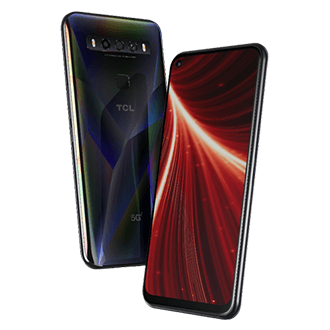
 Budget Winner
Budget Winner
If you’re in the US, the fastest readily available budget Android phone is the TCL 10 5G UW.
![]() Pros
Pros
- A solid processor (Qualcomm Snapdragon 765G 5G) that’s also used in the Google Pixel 5, OnePlus Nord and Motorola Moto Edge
- 5G compatible
- 6GB RAM so switching between apps is fast
- UFS 2.1 which means your phone will load files from storage faster
![]() Cons
Cons
- Not as fast as some of the Chinese brands
If you’re not in the US
If you’re outside the US, the Xiaomi Poco F3 is miles ahead of almost everything else, and way better than the TCL. In fact, it’s faster than most mid-range phones too! (The Xiaomi Mi 11X is about as fast, but is sometimes a little over the $400 mark, so it doesn’t always qualify as a Budget phone by our criteria.)
![]() Pros
Pros
- A near-flagship processor (Qualcomm Snapdragon 870 5G)
- 5G compatible
- 6 or 8GB RAM so switching between apps is super fast
- UFS 3.1 which means your phone will load files from storage faster
![]() Cons
Cons
- None
Fastest mid-range Android phone ($400- $700)
If you’re in the US

 Mid-range Winner
Mid-range Winner
If you’re in the US, the fastest readily available mid-range Android phone at the moment is the OnePlus 9. It’s as fast as most of the flagship phones!
![]() Pros
Pros
- The same processor that’s in all the best flagships at the moment (Qualcomm Snapdragon 888 5G)
- 5G compatible
- 8GB RAM so switching between apps is super fast, and you shouldn’t have to reload any apps
- UFS 3.1 which means your phone will load files from storage faster
![]() Cons
Cons
- None
If you’re not in the US
If you’re outside the US, you’re in luck, because you have two, equally fast, options to choose from:

OnePlus 9

Xiaomi Mi 11X Pro
![]() Pros
Pros
- A flagship-level processor (Qualcomm Snapdragon 888 5G), which powers the ASUS ROG Phone 5 gaming monster, and the Samsung Galaxy S21 series
- 5G compatible
- 8GB RAM so switching between apps is super fast
- UFS 3.1 which means your phone will load files from storage faster
![]() Cons
Cons
- None
Fastest flagship Android phone ($700+)
There’s no clear winner when it comes to flagship performance. The following phones are all blisteringly fast, so if speed is all you’re after, you can’t go wrong with any of them.
If you’re in the US
If you’re in the US and you want raw speed, you should consider the following Android phones:

 Flagship Winner
Flagship Winner
OnePlus 9 Pro
 Flagship Winner
Flagship Winner
Samsung Galaxy S21 Ultra
If you’re not in the US
If you’re not in the US, your shortlist for speed should include the following Android phones:

OnePlus 9

Samsung Galaxy S21 Ultra (the Snapdragon variant, not the Exynos)

Asus ROG Phone 5 Ultimate

Oppo Find X3 Pro

Vivo iQOO 7
Vivo X60 Pro+

Xiaomi Mi 11 Pro
Xiaomi Mi 11 Pro Ultra
Xiaomi Redmi K40 Pro+
Note that if you attach its clip-on cooling fan, the Asus ROG Phone 5 Ultimate will probably outperform the others over the long haul, but you’d have to be a pretty serious gamer to want that.
My advice would be to pick the phone that has the best price and features, all round.
All these phones share all the same pros and have no cons, when it comes to performance:
![]() Pros
Pros
- The fastest Snapdragon processor available (Snapdragon 888 5G), so everything loads in a flash
- Instantaneous switching between apps with up to 12GB of RAM on all devices (up to 16GB on the Samsung Galaxy S21 Ultra and a whopping 18GB on the Asus ROG Phone 5 Ultimate)
- UFS 3.1 storage, which means your phone will load files from storage faster
- 5G compatible
![]() Cons
Cons
- None
 Best Android phone battery
Best Android phone battery
If your phone is down to 30% before lunch, and in the red zone by mid-afternoon, it’s not fit for purpose. No one wants to carry a portable battery everywhere they go!
But at the same time, most people don’t want one of those monsters out there that are all battery and not much else.
So this section isn’t about which phone has the biggest battery. It’s about which phone has an amazing battery life, but still holds its own in all other departments.
Select your budget to see our recommendation:
Best budget Android phone battery ($100 – $400)
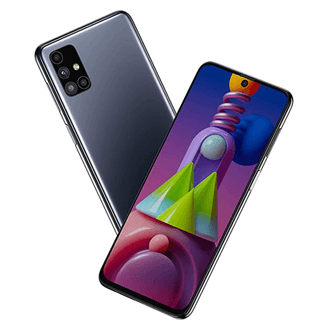
 Budget Winner
Budget Winner
The best budget phone battery is, without question, the Samsung Galaxy M51 (just make sure you check that it supports your carrier before you buy, though). It will easily last you a whole day if you’re a heavy user, and a couple of days if you’re not.
It has 7000mAh capacity, 25W fast charging and you can charge it from 0%-100% in just 115 minutes.
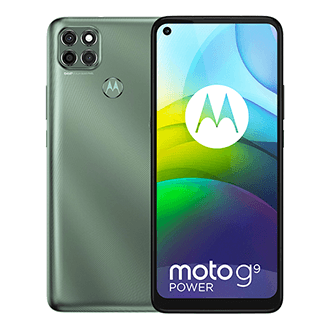
 Budget Winner
Budget Winner
If you’re in the US, you might also consider the Motorola Moto G9 Power (but check that it supports your carrier before buying), and if you’re elsewhere, you might consider the Realme C12, Infinix Smart 4 Plus or Infinix Smart 5.
Best mid-range Android phone battery ($400- $700)
In the mid-range Android phone category, there’s no clear winner when it comes to battery life.
If you’re in the US
If you’re in the US, and you’re after great battery life, your shortlist should include these phones:
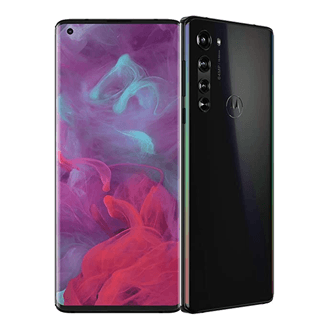
 Mid-range Winner
Mid-range Winner
Motorola Edge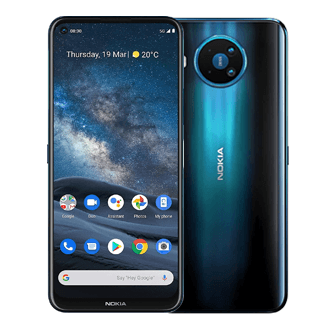
 Mid-range Winner
Mid-range Winner
Nokia 8.3 5G
If you’re not in the US
If you’re not in the US, you should consider these Android phones:

Motorola Edge

Nokia 8.3 5G

Samsung Galaxy A72

OnePlus 9R

Vivo iQOO 3 5G

Xiaomi Mi 10T Pro 5G
Best flagship Android phone battery ($700+)
Battery life at the Android flagship end of town is a somewhat murky affair. As per the mid-range category, it all comes down to software-hardware configuration as well as individual use.
If you’re in the US
If you’re in the US, and you’re after a flagship Android phone with great battery life, your shortlist should include these phones:

 Flagship Winner
Flagship Winner
Samsung Galaxy S21 Ultra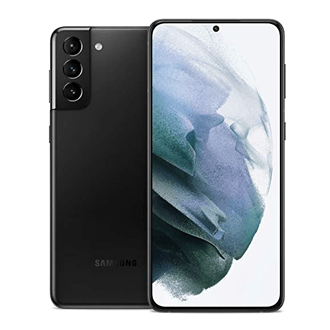
 Flagship Winner
Flagship Winner
Samsung Galaxy S21+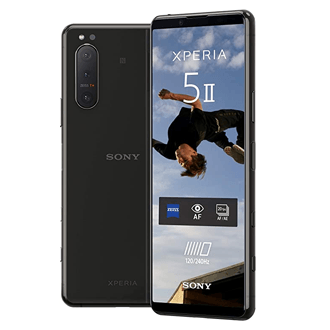
 Flagship Winner
Flagship Winner
Sony Xperia 5 II
If you’re not in the US
Outside of the US, if you want a phone with amazing battery life, check out the following:

Samsung Galaxy S21 Ultra

Samsung Galaxy S21+

Sony Xperia 5 II

Asus ROG Phone 5
 Most secure Android phone
Most secure Android phone
Each month, Google releases a security update (aka ‘security patch’) for Android. These updates fix known security vulnerabilities in the Android operating system.
The security of a phone can be measured in terms of how quickly it receives these updates. For example:
- If the phone is manufacturered by Google and is unlocked, it will receive security updates very quickly.
- If the phone is manufactured by another company (e.g. Samsung or OnePlus) and is unlocked, it will usually receive security updates more slowly, because the manufacturer has to optimize each update for its phones, before rolling them out. Some manufacturers (e.g. Samsung) complete this process quickly, whereas others (e.g. OnePlus) are quite slow.
- If the phone is locked in to a carrier, it will usually receive updates very slowly, because the carrier has to optimize each update for its phones and networks. And carriers are notoriously slow at this.
In other words, an unlocked Google phone will almost always receive updates the fastest – typically within a few days of release.
Select your budget to see the winner:
Most secure budget Android phone ($100 – $400)

 Budget Winner
Budget Winner
The most secure budget Android phone is the Google Pixel 4a. If unlocked, it will receive all security updates as soon as they’re released. If locked in to a carrier, it will receive security updates as soon as the carrier has optimized them. (You won’t have to wait for another manufacturer to optimize the updates too.)
Most secure mid-range Android phone ($400- $700)
The most secure mid-range Android phones are:
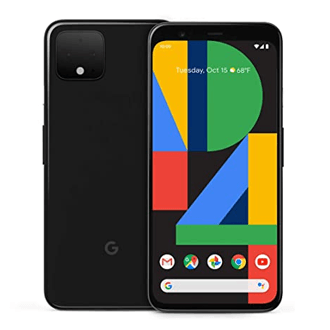
 Mid-range Winner
Mid-range Winner
Google Pixel 4
 Mid-range Winner
Mid-range Winner
Google Pixel 4a
 Mid-range Winner
Mid-range Winner
Google Pixel 5
If unlocked, all these phones will receive all security updates as soon as they’re released. If locked in to a carrier, they’ll receive security updates as soon as the carrier has optimized them. (You won’t have to wait for another manufacturer to optimize the updates too.)
Most secure flagship Android phone ($700+)
Google doesn’t currently have any phones in the flagship range, so the next best thing would be a new Samsung flagship. Unlocked Samsung phones receive security updates quite quickly, these days. We’d recommend one of the following:
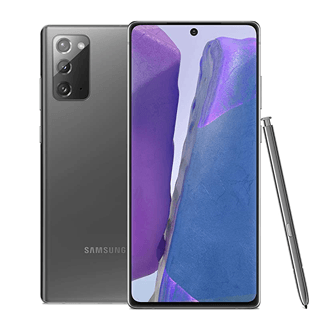
 Flagship Winner
Flagship Winner
Samsung Galaxy Note 20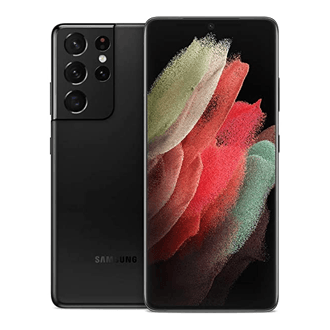
 Flagship Winner
Flagship Winner
Samsung Galaxy Note 20 Ultra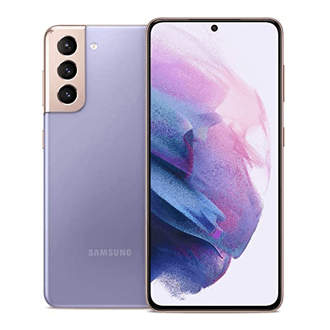
 Flagship Winner
Flagship Winner
Samsung Galaxy S21
 Flagship Winner
Flagship Winner
Samsung Galaxy S21+
 Flagship Winner
Flagship Winner
Samsung Galaxy S21 Ultra
Note, however, that Samsung doesn’t provide seamless update support, so installing security updates on a Samsung phone means more downtime.
 Best all-rounder Android phone
Best all-rounder Android phone
The winner here is the phone with the most recommendations above.
Select your budget to see the winner:
Best budget all-rounder ($100 – $400)

 Budget Winner
Budget Winner
The best all-rounder in the budget category is the Google Pixel 4a. It wins in a landslide.
![]() Pros
Pros
- Easy point & click photography
- Google’s amazing photo processing software
- Stunning portrait shots (blurred / bokeh background), with accurate edge detection, on both main and selfie cameras
- Sharp detail, even in darker areas of photos and video (e.g. a dark shadow on a sunny day)
- Natural color reproduction
- No skin softening / beautifying
- Great night mode (‘Night sight’) so no need to use the flash
- Amazing astrophotography (but you need a tripod)
- Fast auto-focus
- Excellent video stabilization (so you can walk or run and the video won’t be jumpy or jittery)
- Bright low-light video
- Good microphone sensitivity in videos
- Can shoot 4K video
- High resolution (443 pixels per square inch) display with 803 nits maximum brightness
- Corning Gorilla Glass 3 glass
- HDR10 (means better detail in light scenes and better visibility in dark scenes)
- OK performance and battery
- Stock android with no bloatware
- Google’s smart, AI-powered user experience (e.g. ‘Now playing’ on the always-on display shows the name of any song playing in earshot, heads-up shows your next appointment on your always-on display and homescreen, clever battery optimisation, use Google Assistant when your phone is locked, indicator in your camera viewfinder to show you when your phone is level, Smart Storage to automatically remove local copies of photos and videos after a set period if they’re backed up to Google Photos, access Google Lens directly in your camera app, fast video shortcut – just press and hold the big shutter button in the camera view to record video, search for and call any nearby business in your phone app even if they’re not in your contacts, ‘Hold for me’ and auto call screening (US only), and the list goes on!)
- Most secure mid-range Android phone
- Supports Google’s CameraX library, so Snapchat takes photos & video with the device’s actual camera, rather than just taking a screenshot of the viewfinder as it does with all non-Pixel budget phones
![]() Cons
Cons
- No wide-angle camera
- No telephoto lens – digital zoom only, which means zoomed photos and video are a bit grainy (but not more than the competition)
- No macro mode for extreme close-ups
- Microphone sensitivity does mean it picks up a bit of wind noise in outdoor videos
- Low light video can be a bit grainy / visually ‘noisy’ in darker areas because it uses software to brighten
- Only 60Hz refresh rate display (so scrolling won’t look as smooth as some phones in the budget range)
Best mid-range all-rounder ($400- $700)

 Mid-range Winner
Mid-range Winner
The best all-round Android phone in the mid-range price tier is the Google Pixel 5. While not as far clear of the field as the Google Pixel 4a is in the budget range, it’s still in a class of its own.
![]() Pros
Pros
- A near-flagship experience at a mid-range price
- Easy point & click photography
- Google’s amazing photo processing software
- Stunning portrait shots (blurred / bokeh background), with accurate edge detection, on both main and selfie cameras
- Ultra-wide angle lens so you can get more into your photos
- Natural color reproduction
- Minimal lens flaring (halo effect) when taking photos with the sun or a bright light in them
- No skin softening / beautifying
- Great night mode (‘Night sight’) so no need to use the flash
- Amazing astrophotography (but you need a tripod)
- Fast auto-focus
- Sharp detail, even in darker areas of photos and videos (e.g. a dark shadow on a sunny day)
- Excellent video stabilization (so you can walk or run and the video won’t be jumpy or jittery)
- Bright low-light video
- Good microphone sensitivity (with less wind noise than the budget Pixel 4a and also less than the Samsung Galaxy S20 FE)
- Can shoot 4K video (at 60 frames per second) but not on ultrawide
- Better ultrawide video than the Samsung Galaxy S20 FE
- High resolution display (432 pixels per inch)
- Excellent color accuracy (1.9 – 3.1 deltaE) in Natural mode
- Corning Gorilla Glass 6
- Good performance
- Excellent battery (particularly standby life)
- Stock Android with no bloatware
- Google’s smart, AI-powered user experience (e.g. ‘Now playing’ on the always-on display shows the name of any song playing in earshot, heads-up shows your next appointment on your always-on display and homescreen, clever battery optimisation, use Google Assistant when your phone is locked, indicator in your camera viewfinder to show you when your phone is level, Smart Storage to automatically remove local copies of photos and videos after a set period if they’re backed up to Google Photos, access Google Lens directly in your camera app, fast video shortcut – just press and hold the big shutter button in the camera view to record video, search for and call any nearby business in your phone app even if they’re not in your contacts, ‘Hold for me’ and auto call screening (US only), ‘Live View’ in Google Maps, and the list goes on!)
- Most secure mid-range Android phone
- Supports Google’s CameraX library, so Snapchat takes photos & videos with the device’s actual camera, rather than just taking a screenshot of the viewfinder as it does with all non-Pixel mid-range phones
![]() Cons
Cons
- No telephoto lens – digital zoom only, which means zoomed photos and video can be a bit grainy (a lot grainier than the Samsung Galaxy S20 FE)
- No macro mode for extreme close-ups
- Limited to 1080p video on the selfie camera
Best all-round flagship ($700+)
The best all-round Android flagship depends on where you live.
If you’re in the US

 Flagship Winner
Flagship Winner
For anyone in the US, the clear winner in the flagship category is the Samsung Galaxy S21 Ultra.
![]() Pros
Pros
- Incredible zoom (10x optical, which means no grainy zoom photos or videos)
- Great low-light performance, both with and without night mode
- Excellent extreme closeups
- Good detail in dark and shadowed areas of photos & video
- Good handling of harsh light in photos (e.g. the sun, a bright light, sunlight on someone’s face)
- Stunning portrait mode with good edge detection
- Great skin detail with little to no ‘beautifying’
- Very clear and detailed selfie photos
- Beautiful 8k video
- 4k selfie video with a natural bokeh (blurred background) effect
- Vibrant colours that are still pretty natural
- Great night-time and low-light video
- Incredible slow-motion
- Excellent performance
- Beautiful, bright, high-resolution display
- Amazing battery life
- Most secure Android flagship phone
- Supports Google’s CameraX library, so Snapchat takes photos and video with the device’s actual camera, rather than just taking a screenshot of the viewfinder as it does with all other flagships outside of the S21 line
![]() Cons
Cons
- Expensive
- Hard to focus on extreme closeup / macro shots (it has a ‘Focus Enhancer’ feature, but it removes the bokeh, blurred background effect)
- Photo and video colors aren’t as natural as the Pixel 5, but better than I expected from a Samsung
- Intrusive advertising and personal data selling
- Heaps of bloatware
- Heavy-handed (I’d say clumsy and unintuitive) customization of Android
- Samsung’s history of slow (non-security) Android updates
If you’re not in the US
If you’re outside the US, you have a few more high quality options to choose from:

Samsung Galaxy S21 Ultra (if you can get the Snapdragon variant)

Xiaomi Mi 11 Ultra

Vivo X60 Pro+

OnePlus 9 Pro

Oppo Find X3 Pro
So which one will be your next Android phone?
I love that the Android world gives us so many options – even if it’s a little overwhelming at times. Hopefully this article has helped you sort through all those options, and you now know exactly what to buy next!
Please let us know, in the comments below, what your next Android phone will be.


 View all of Glenn Murray's posts.
View all of Glenn Murray's posts.